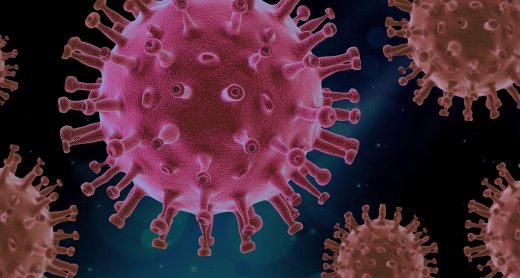Covid-19 in wastewater
Recently information has appeared in the Dutch media about the presence of the Covid-19 Coronavirus in wastewater (1). Below we summarize what this means for our customers and contacts who have their own wastewater treatment plant that treats factory waste water or partly sanitary water. In this memo Colsen presents her vision on the combination of her own knowledge and a short literature review.
Literature review
Previously Covid-19 DNA and RNA have been shown to be present in wastewater (2). The study prompted by the fact that in addition to high fever, diarrhoea was in some cases seen as a symptom of the Coronavirus. A logical question is whether the virus can spread using such an extra emission source. People who directly deal with wastewater professionally would be the first to be exposed. The stability of the virus plays an important role in identifying the risks of infection.
Viruses that cause human infections can be broadly classified into enveloped and non-enveloped or naked viruses. Non-enveloped viruses can withstand extreme conditions such as drought, high temperatures and low pH. Due to these properties they spread easily via water. In addition, they survive our digestive tract so that they cause, for example, intestinal complaints and can be spread via stool. Examples of such viruses are adenovirus and rotavirus. These viruses are more contagious than enveloped viruses.
The Covid-19 coronavirus belongs to the category of enveloped viruses. These are protected by a lipid membrane. However, this does not mean that they are more stable: they do not withstand extreme conditions. Their survival time in water is relatively short compared to naked viruses: viruses similar to Covid-19 survive at 20°C for up to 2 days (3) and at 4°C for up to 14 days (4). In contaminated areas, the Covid-19 virus is likely to be present in sanitary wastewater. It is emphasized that the Covid-19 virus is much more sensitive than other potentially present naked viruses, microbial pathogens and protozoa.
Discussion
In contaminated areas, Coronavirus is likely to be present in sanitary wastewater. The virus may subsequently be released via aerosol formation in open aerated tanks, during cleaning work or sampling (5). In that case, the following are important to make a risk assessment:
- The discovery of Covid-19 is only linked to sanitary waste water. On industrial wastewater treatment plants, only a relatively small amount of sanitary water is mixed with a large flow of warm industrial wastewater. The shortened literature study shows that comparable viruses have a decreasing lifespan at higher temperatures;
- If wastewater buffering and anaerobic treatment take place before the aerobic treatment, significant residence time at elevated temperatures is provided. This greatly reduces the chances of survival of the Covid-19 virus before any aerosol formation is possible in the aerobic treatment;
- It is assumed that operators of the wastewater treatment plant consciously deal with the already existing risks associated with wastewater treatment. This means that adequate personal protective equipment (PPE) is worn when performing daily activities. These must provide protection against biological agents present in waste water.
Based on this consideration, the risk is considered small that contamination can take place during normal operation of the wastewater treatment plant.
Vision Colsen
If “best practices” for operating wastewater plants are observed, additional risks induced by the Covid-19 virus are considered small. These are considered sufficient to provide protection against the Covid-19 Coronavirus (3,4). This includes that:
- The correct PPE must be worn at all times to carry out work as safely as possible;
- Internal working procedures must be properly followed;
- Before a task is started, an LMRA must always be performed;
- When in doubt, the work is stopped and the manager is contacted.
To further reduce risks, it is recommended to use respiratory protection for work where aerosol formation is possible, e.g. work near aerated tanks and cleaning of water treatment equipment.
The Covid-19 coronavirus is mainly transmitted through coughing, sneezing or contact with contaminated surfaces. That is why we emphasize following government guidelines to prevent this type of transfer. Wash hands regularly and do not touch eyes, nose and mouth with dirty hands. As an additional guideline, WHO recommends washing hands before putting on PPE and after putting on PPE (including gloves).
References
- https://www.rivm.nl/nieuws/nieuwe-coronavirus-aangetroffen-in-rioolwater
- https://wef.org/news-hub/wef-news/the-water-professionals-guide-to-the-…
- WHO; “Water, sanitation, hygiene, and waste management for the COVID-19 virus”; interim guidance 19 March 2020
- Global Water Research Coalition; “COVID-19 Virus Water, Sanitation and Wastewater Management”; Factsheet 10 March 2020
- Arbocatalogus Waterschappen, Deel 5: Biologische Agentia; versie 2016

Do you work with wastewater? Take the regular hygiene regulations into account!

Would you like to know more?
Ask
Robin
Robin Jordaens , Business Development Manager